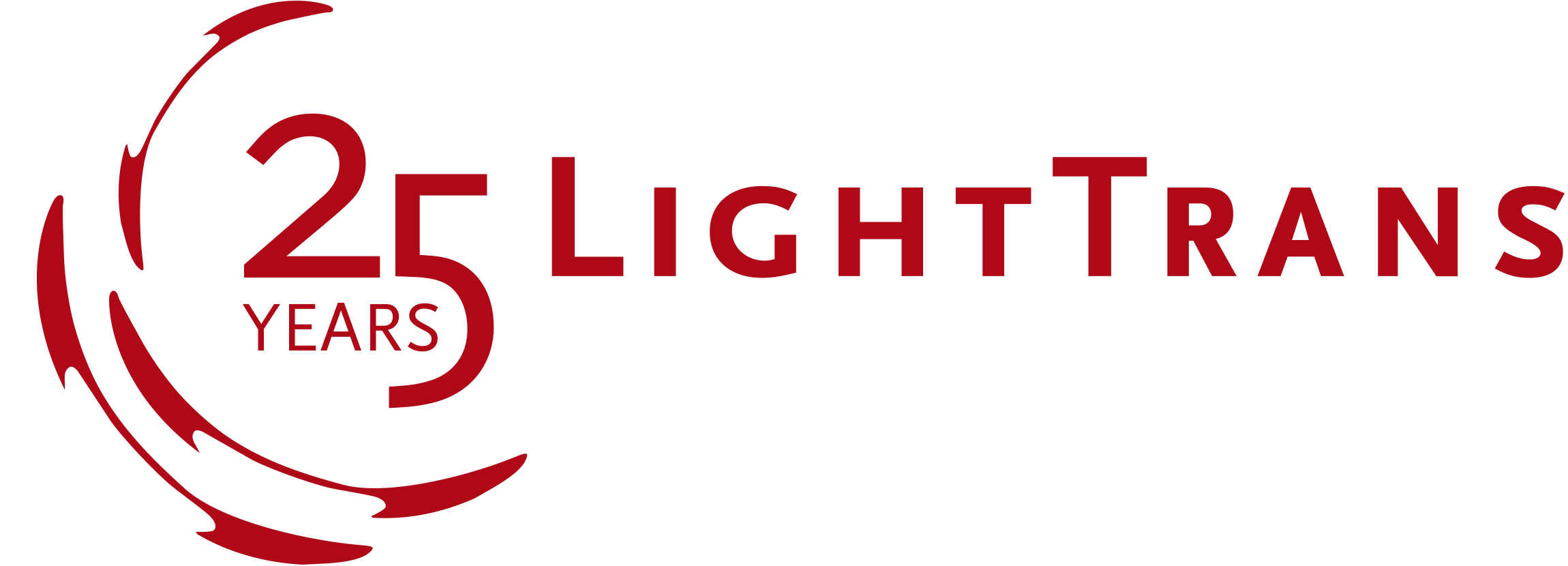Trainings Archives
On-Site VirtualLab Fusion Training Course: Introduction + Gratings
20 – 24 November 2023
09:00 – 16:30 (CET)
Registration Deadline is 15 November 2023 | Limited to 12 participants
OptoNet Summer Course: Fast Physical Optics Modeling and Design
11 – 15 September 2023
09:00 – 16:30 (CEST)
Technologie- und Innovationspark
Moritz-von-Rohr-Straße 1a, 07745 Jena, Germany
Book here
OptoNet Summer Course: Fast Physical Optics Modeling and Design
04 – 08 July 2022
09:00 – 16:30 (CEST)
SCALA Panoramabankett, Leutragraben 1, 07743 Jena, Germany
Book here
VirtualLab Fusion Technology and Applications: Gratings and Diffractive Lenses
12 – 13 February 2020
Premiere Workspaces, San Jose, CA, USA
9:00 – 17:00
Gratings, metagratings, and diffractive lenses are increasingly gaining importance in modern optics for various purposes. Subwavelength structures including metasurface building blocks extend the potential of microand nanostructured flat optical components. Naturally, modeling and design of such components and their inclusion in optical systems require physical-optics techniques. We show how VirtualLab Fusion provides you with the technologies and tools you need.
Learning outcomes:
- Gain an overview of different applications of diffractive optics including: gratings for spectrum separation, lightguide coupling and polarization manipulation, metagratings with high efficiency, diffractive lenses in imaging, point-cloud generation, and more.
- Understand the theory and usage of modeling technologies for gratings and diffractive lenses: the Thin Element Approximation (TEA), the Local Plane Interface Approximation (LPIA), and the rigorous Fourier Modal Method (FMM), also known as RCWA.
- Practice hands-on with workflows in VirtualLab Fusion for the modeling and design of various types of gratings, including blazed, binary (also slanted), holographic, and metagratings for different applications. Analysis of whole optical systems which include gratings and diffractive lenses.
Registration deadline: 1 February 2020
Request an offer: via our online form
Use the following links to get more details:
Please note the neccessary technical equipment:
- Bring your own laptop (preferrably Windows-based)
- VirtualLab Fusion should already be installed before attending the training course
- As well as the current VirtualLab Fusion trial (get trial here)
VirtualLab Fusion Technology and Applications: Introduction to Fast Physical Optics Design
10 – 11 February 2020
Premiere Workspaces, San Jose, CA, USA
9:00 – 17:00
Nowadays physical optics principles are of ever-growing importance for the analysis and design of advanced optical devices and systems. Come to our training course to learn the concepts of Fast Physical Optics on which VirtualLab Fusion is based. We show how you can benefit from VirtualLab Fusion in your daily work.
Learning outcomes:
- Discover essential physical-optics effects and phenomena in modern optical systems and how to include them in your modeling and design.
- Dive right into the software with hands-on exercises on typical applications (e.g., lens systems, laser optics, fiber coupling, interferometry, microscopy), accompanied by the corresponding workflows.
- Build up your optical system and perform an analysis and design thereof with different modeling technologies and optimization tools in VirtualLab Fusion.
Registration deadline: 1 February 2020
Request an offer: via our online form
Use the following links to get more details:
Please note the neccessary technical equipment:
- Bring your own laptop (preferrably Windows-based)
- VirtualLab Fusion should already be installed before attending the training course
- As well as the current VirtualLab Fusion trial (get trial here)
VirtualLab Fusion Technology and Applications: Gratings and Diffractive Optics
25 – 27 September 2019
Jena, Germany
9:00 – 17:00
Gratings, diffractive lenses, diffractive optical elements and diffusers are increasingly gaining importance in modern optics for various purposes. Subwavelength structures including metalenses extend the potential of micro- and nanostructured flat optical components. Naturally, modeling and design of such components and their inclusion in optical systems require physical-optics techniques. We show how VirtualLab Fusion provides you with the techniques and tools you need.
Learning outcomes:
- Overview of different applications of diffractive optics including: gratings for spectrum separation, lightguide coupling and polarization manipulation, diffractive lenses and metalenses in imaging, diffractive point-cloud generation, diffusers for light shaping, and more.
- Understand the theory and usage of modeling techniques for micro- and nanostructures in Virtuallab Fusion: diffraction integrals and their fast implementation, the Thin Element Approximation (TEA), the Local Plane Interface Approximation (LPIA), split-step techniques, and the rigorous Fourier Modal Method (FMM), also known as RCWA.
- Hands-on workflows on the modeling and design in VirtualLab Fusion of various types of gratings and diffractive optical elements (DOEs) for different applications. Analysis of complete optical systems which include gratings and diffractive optics elements.
VirtualLab Fusion Technology and Applications: Introduction to Optical Design Software
23 – 24 September 2019
Jena, Germany
9:00 – 17:00
Nowadays physical optics principles are of ever-growing importance for the analysis and design of advanced optical devices and systems. Come to our training course to learn the concepts of Fast Physical Optics on which VirtualLab Fusion is based. We show how you can benefit from VirtualLab Fusion in your daily work.
Learning outcomes:
- Discover essential physical-optics effects and phenomena in modern optical systems and how to include them in your modeling and design.
- Dive right into the software with hands-on exercises on typical applications (e.g., lens systems, laser optics, fiber coupling, interferometry, microscopy), accompanied by the corresponding workflows.
- Build up your optical system and perform an analysis and design thereof with different modeling technologies and optimization tools in VirtualLab Fusion.
VirtualLab Fusion Technology and Applications: Gratings and Diffractive Optics | Jena 27 – 29 March 2019
27 – 29 March 2019
9:00 - 17:00
Jena, Germany
Gratings, diffractive lenses, diffractive optical elements and diffusers are increasingly gaining importance in modern optics for various purposes. Subwavelength structures including metalenses extend the potential of micro- and nanostructured flat optical components. Naturally, modeling and design of such components and their inclusion in optical systems require physical-optics techniques. We show how VirtualLab Fusion provides you with the techniques and tools you need.
Learning outcomes:
- Overview of different applications of diffractive optics including: gratings for spectrum separation, lightguide coupling and polarization manipulation, diffractive lenses and metalenses in imaging, diffractive point-cloud generation, diffusers for light shaping, and more.
- Understand the theory and usage of modeling techniques for micro- and nanostructures in Virtuallab Fusion: diffraction integrals and their fast implementation, the Thin Element Approximation (TEA), the Local Plane Interface Approximation (LPIA), split-step techniques, and the rigorous Fourier Modal Method (FMM), also known as RCWA.
- Hands-on workflows on the modeling and design in VirtualLab Fusion of various types of gratings and diffractive optical elements (DOEs) for different applications. Analysis of complete optical systems which include gratings and diffractive optics elements.




